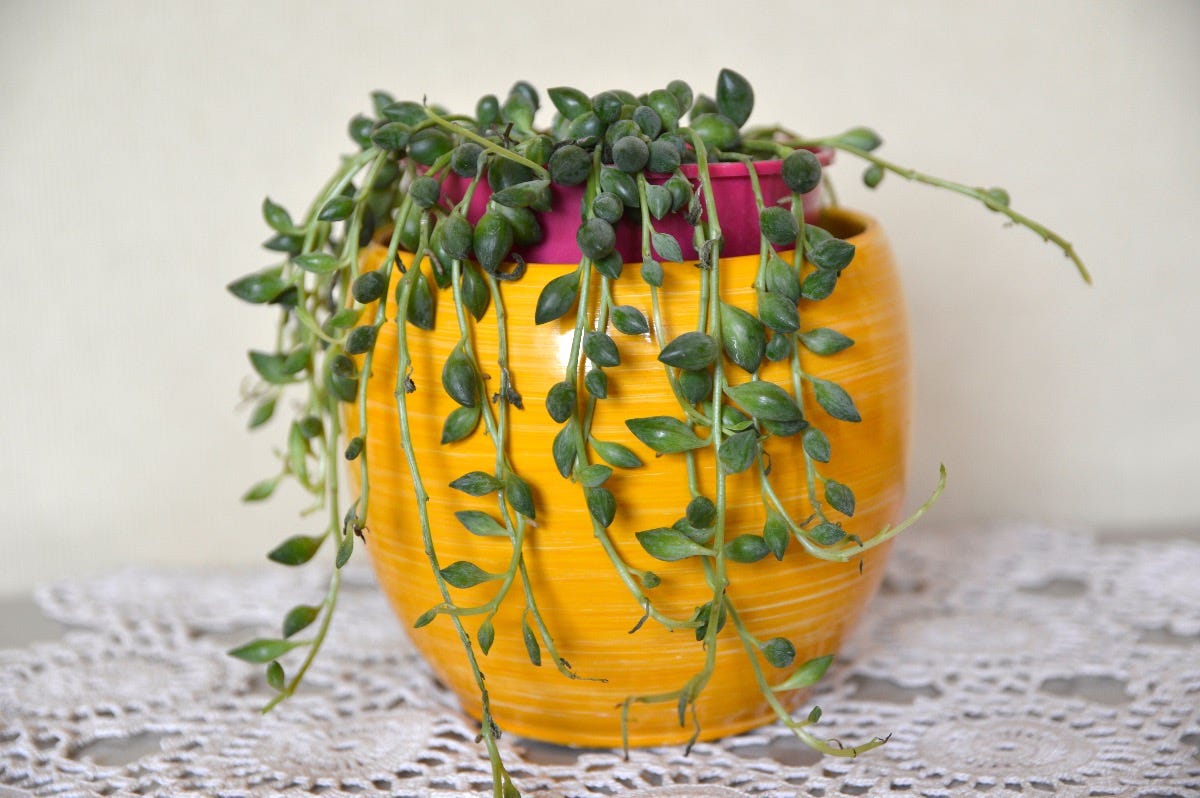Finalist: 2025 Hermit Crab Prize

Start off with a young and healthy plant. The tear-shaped leaves are succulent and should be firm and unblemished initially. The leaves are held on stems that drape outwards from the plant like strings, giving it one of its other common names, String of Tears. Clown’s Tears are easy to maintain and need very little care and attention to keep them with you, year on year.
Light
Your plant will thrive in partial sunlight, but will grow in the shadows, with only brief glimpses of something warmer, if your partner decides it would be better to position it in full shade.
Water
Clown’s Tears don’t require a lot of water, so don’t worry if you are prevented by circumstances, or by your partner, from watering your plant for long periods. He has clearly told you that too much kindness might kill it, and that it ought to tolerate neglect without complaint. If it becomes too dry however, the foliage will begin to shrink and shrivel, which should be seen as a cry for help.
Nutrients
Use a liquid fertiliser in the spring to keep your plant healthy. Clown’s Tears have little need for anything extra, as your partner will remind you, so they will be humble and forgiving if their feed is forgotten and they don’t receive anything at all.
Care and Maintenance
New tears will keep forming throughout the summer and adding to the strings of tears as time goes by. The growth can be out of control and the plant will need to be cut down to size if it gets too big for its boots. Slicing pieces off with a sharp knife should solve this problem. Also pull off any bruised or shrivelled leaves, as these can be unsightly and your partner doesn’t want to see those, does he?
These plants don’t like the cold and can’t be allowed outdoors as the weather turns in the autumn and winter. Clown’s Tears must then be kept indoors at all times for their own good, especially if their appearance has deteriorated.
Propagation
If you want to produce more plants, pieces can be removed from the mother plant and placed on the surface of fresh soil. However, this is not advised unless proper care for the offspring can be guaranteed.
Survival
These plants can largely take care of themselves and, like some people, can survive in a range of adverse conditions. If you grow tired of Clown’s Tears, and want to make a change, you might consider a similar species, Senecio rowleyanus(String of Pearls) instead. If so, it would be advisable to consign your plant and your partner to the compost heap and grow your new plant alone or with a new partner, watching the leaves like exquisite pearls string themselves into fine strands, into pearl necklaces, one by one.
Author: Creana Bosac lives in Leicestershire, where she has worked as an Associate Lecturer in ecology for the Open University. Her work has appeared in Lucent Dreaming, Briefly Zine and The Storms amongst others and she has authored a creative writing feedback guide. She loves plants and being in the outdoors.



